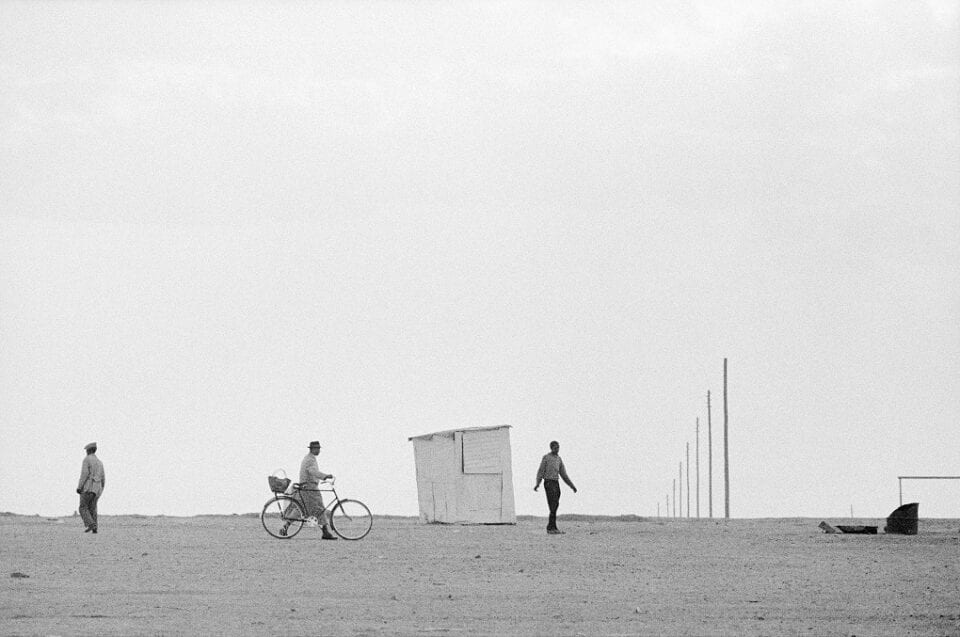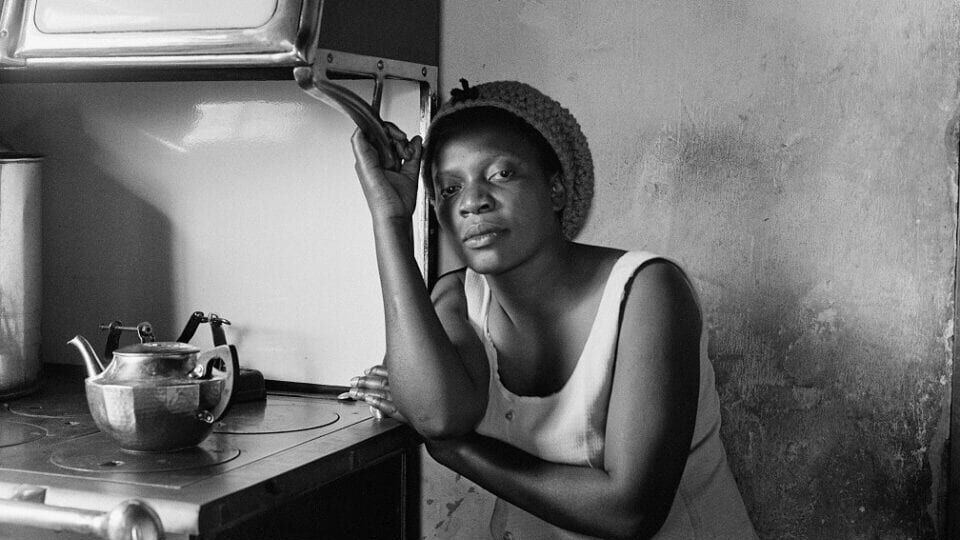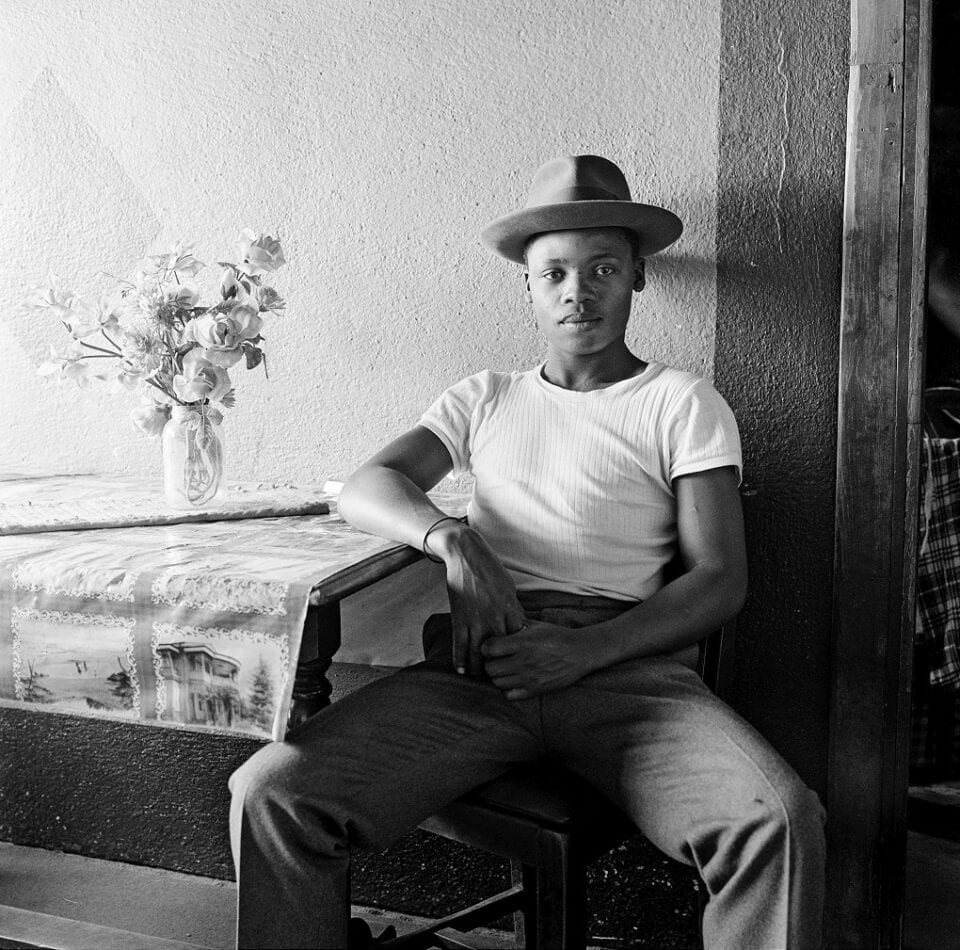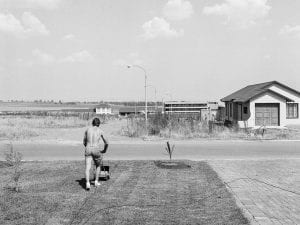Aged 17, the young South African photographer David Goldblatt (1930-2018) would hitchhike from Randfontein, the small mining town where he was born, into Johannesburg. He walked around the city until the next morning, talking to people and making pictures. “People would ask me what I was doing,” he explained. “I would say, ‘I’m walking around the city; I’m learning the city, and trying to take photographs.’” This approach became the foundation for a lifetime of work. Goldblatt lived in Johannesburg for 50 years, becoming recognised for his documentation of the apartheid era in South Africa. The resulting images – which focus on the lives of everyday people – are now the subject of an exhibition at London’s Goodman Gallery.
The show charts the development of Goldblatt’s work in a city divided by structural racism. “Johannesburg”, he wrote, “is not an easy city to love. From its beginnings as a mining camp in 1886, whites did not want brown and black people living among or near them and over the years pushed them further and further from the city and its white suburbs. Like the city itself, my thoughts and feelings about Joburg are fragmented.”
The show centres around Goldblatt’s 1972 photographic essay on Soweto, a township west of the city which later became the epicentre for an uprising in 1976. The images are focused on the experiences of residents – from sports and religious gatherings to domestic scenes, shopkeepers and children at play. “I was drawn not to the events of the time but to the quiet and commonplace where nothing ‘happened’ and yet all was contained and imminent,” the photographer said in his last interview, published in 2019.

Goldblatt was struck by the divisions in society, choosing to work in black and white as “colour seemed too sweet a medium to express the anger, disgust and fear that apartheid inspired.” Reflecting on the experience of making images at the time, he said: “The photography was invariably within the crowdedness and compression of matchbox houses and treeless, narrow streets,” he explained. “On winter days the place was enveloped in a pall of smoke and grey dust. I would drive back into the spaciousness and clean air of Joburg’s northern suburbs. Under the canopies of thousands of trees, I would drive past houses serene in their grounds. And to the comfort of home. Nothing in all of my life made me more sharply aware of the power of apartheid and of what it meant to be Black or White, than this simple transition.”
The photographer described himself as “a self-appointed observer and critic of the society into which I was born.” These pictures, which are by marked by Goldblatt’s subtlety and intimacy, are testament to this statement. By focusing in on individuals and a pervasive sense of humanity, they uncover difficult realities about a society penetrated by racial inequality, trauma and injustice.
David Goldblatt: Johannesburg 1948 – 2018, runs until 25 August. Find out more here.
1. David Goldblatt, Patience Poni visiting her parents, Ruth and Jackson Poni, 1510A Emdeni South, Soweto (2_11376), 1972.
2. David Goldblatt, Young man at home, White City, Jabavu, Soweto (2_12560), 1972.
3. David Goldblatt, Miriam Diale in her bedroom, 5357 Orlando East, Soweto, (2_12890) , October 1972.
4. David Goldblatt, Coffee cart, Soweto (3_A7053), 1964







